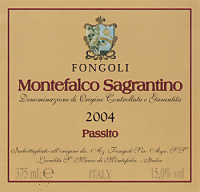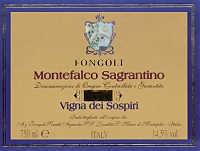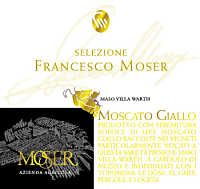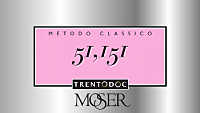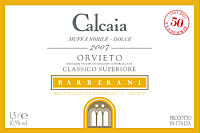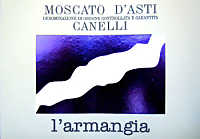|
Sensorial tasting of wine is done is distinct ways and procedures according to
the type of result to be obtained. The result does not always have the goal of
determining the organoleptic qualities of a wine. Tasting, in fact, is not done
in order to determine wine qualities only: a wine is tasted also for
educational purposes and to improve the skill of a taster. Also in this
specific case, it depends on the type of study and the educational result to be
obtained, therefore the tasting method is being chosen according to the type of
result to be obtained. A wine is tasted for many reasons: to understand it,
determining its correspondence to a specific type, evaluating its real wine
making value according to defined models and accepted as a reference.
The procedures of wine sensorial tasting are generally classified in two
distinct categories: blind and unblind. The discriminating factor
is represented by the way with which the samples are being evaluated by the
taster. In blind tasting all the productive characteristics of a wine
are kept hidden, including its origin, producer and wine making techniques. In
this type of tasting - like to say - the taster will face the wine without the
help of any clue, saved its appearance which is generally and easily determined
by simply looking at the glass. In the so called unblind tasting is true
the opposite, that is the taster knows in advance all or most of the productive
characteristics of a wine, including the name of the producer, grapes, vintage
and wine making techniques.
According to the result and goal of tasting, in the so called blind
tasting sometimes part of the elements are revealed in advance, such as in
case, for example, of the evaluation of wines belonging to the same territory
or vintage. In these specific cases, the unfolding of certain elements is
essential as well as unavoidable. However, knowing a detail about the wine to
be tasted affects the reliability of the taster and it will probably influence
the evaluation in function of the known factors. For example, in case a series
of Montefalco Sagrantino wines are to be tasted, by providing this information,
the taster will focus on the characteristics expected to be perceived in wines
from this area. This means certain aspects of the wine, like to say, not
corresponding to the type but significant could be ignored, and the taster
could simply focus on the characteristics a Montefalco Sagrantino is supposed
to have.
It should be said giving information about a wine in a blind tasting
is done in function of the result to be obtained. In the above example, the
denomination is revealed in order to help the determination of the
correspondence of a wine to a territory and a variety. The elements provided in
a blind tasting however affects the evaluation of the taster. Specifically, not
only the correspondence of a wine to a specific category, but also the
determination of the personal correspondence and preference of a wine according
to that category. In order to clear this concept, in case the personal
preference of a taster for Sagrantino is expressed by very robust and tannic
wines, the evaluation could penalize round and less aggressive wines.
The reliability of blind tasting depends, in any case, on the number and type
of element provided to the taster. The higher the number of elements the lower
the reliability and impartiality of the result. Every known element will
determine a prejudicial behavior towards the wine to be evaluated, while
compromising the reliability of the result in function of the personal
preference of the taster towards known elements. This prejudicial behavior is
particularly evident in the so called unblind tasting, that is the exact
opposite of blind tasting. In fact, in this type of tasting all the
elements of a wine are known, therefore giving the taster a huge help. It is
very likely the taster will tend to take for granted many characteristics of the
wine without having perceived and verified them in wine by using his or her
senses.
|
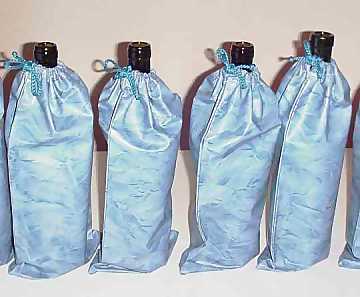 | |
| Wine bottles hidden inside bags and ready
for blind tasting | |
|
For many aspects, unblind tasting has the same value of group tasting.
In case a taster tells the others he or she perceived a specific aroma in a
wine - therefore providing a clue - the other tasters too will tend to
perceive the same in their glasses. Another advantage of blind tasting consists
in forcing the tastes to a higher concentration, therefore to do his or her job
with a better attention. The taster, like to say, is forced to personally face
the wine to be evaluated, free from every prejudice, he or she must use his or
her skills in order to evaluate a wine. For this reason, and in order to avoid
the conditioning of the tasters, blind tasting is done in an isolated
condition, therefore avoiding the contact, even visual, with the other tasters.
For example, the astonishment shown by a taster represents - as a matter of
fact - a clue for all the other ones.
Moreover, blind tasting ensures one more advantage. In series tasting - that is
the evaluation of many wines in the same session - all wines are considered in
the very same conditions. One of the many elements which can affect the
reliability of the result is in fact represented by the name of the producer.
In case the taster has a preference for a specific producer, he or she will
tend to favor these wines and, maybe, will have a more critical and prejudicial
behavior towards the wines of unknown producers. The fact of keeping this
information hidden, let all the wines and producers to be in the same and
essential equal condition. In other words, blind tasting allows the taster to
discover good or bad wines also in unknown samples or in wines tasted in past
occasions.
What has been said so far could make one think blind tasting is a method to be
exclusively used in professional occasions or in wine contests. Blind
tasting also has a high formative and educational purpose for anyone who tastes
wine, both professionally and at an amateur level. The lack of clues therefore
provides an extraordinary occasion of study, in particular for the
identification of varieties, wine making techniques and territories.
Confirmations and doubts are therefore satisfied at the end of tasting, that is
at the moment the wines are shown and all the characteristics finally become
known. This moment represents one more advantage of blind tasting: not only the
association of one's own evaluation with a wine, but also the evaluation of
one's own tasting skill.
Blind tasting is carried out by scrupulously realizing all the factors
making it, including the way a wine is being presented to the taster. It
should be said, in fact, also the simply view of the bottle shape represents,
as a matter of fact, a prejudicial element for the evaluation. For example, the
Burgundy bottle - not to be confused with the Albeisa bottle - is frequently
used for red wines produced with Pinot Noir, therefore the sight such a bottle
provides a prejudicial element to the taster. The same is true, generally
speaking, for the Bordeaux bottle in which are usually bottled robust and
full bodied red wines. For this reason, in blind tasting, the bottle is
hidden, not only in order to hide the label, but also its shape. In
fact, for this purpose are being used large bags in order to avoid the shape of
the bottle to be revealed.
On this regard it must be noticed that wrapping a bottle with an aluminum foil,
a method used in certain tasting, is a not truly correct practice. If it is
true the label and the real identity of the wine are of course concealed, the
shape of the bottle is clearly evident therefore offering an identifying and
prejudicial element to the taster. Also the cap on the neck of the bottle gives
explicit clues about the wine - including the name of the producer - therefore
it is better to completely remove it. An alternative way consists in pouring
the wine in the glass away from the eyes of the taster and then bringing it
to him or her. By doing so it is not possible to get any clue about the bottle
as - in some cases - both the neck and the opening can be personalized by
producers, therefore, made recognizable.
The regularity of blind tasting is generally ensured by a person in charge of
serving wines and does not take part to the evaluation. This is the only one to
know the wines presented to the tasters and arrange things in order to keep
the bottles hidden and unknown until the end of the tasting session. It must be
noticed at the end of the session, all the wines are finally revealed and every
sample is therefore associated to the relative bottle. Blind tasting can
however be done at home with friends and allowing everyone of them to take
part. Every person participating to the tasting, contributes to the session by
bringing a bottle and making sure its identity will be scrupulously kept hidden
to the others. On this regard, the bottle will be put in a large and non
transparent bag and the neck of the bottle will be wrapped with an aluminum
foil in order to hide the information written in the cap.
Everyone participating to the tasting will completely remove the caps of his or
her bottle and will uncork it, while keeping it hidden in the bag. Every
participant will know about his or her own wine only and will ensure to the
other participants the fundamental condition of blind tasting. In order to make
the exercise of blind tasting useful, it can be asked to all participants to be
in silence during the whole tasting session in order to not influence others.
Being with friends and tasting together certainly represent a pleasing moment
and therefore we can also be less rigorous and, for every wine, we can also
share our opinions with others. No matter of this, in order to benefit from the
important educational chance offered by blind tasting, it is indispensable the
wine is kept hidden until the end. The practice of blind tasting gives the
opportunity to improve our skill and knowledge as well as ensuring, with your
friends, a pleasing moment of sharing, growth and fun.
|


